No products in the cart.
Need help? Call us:
+1 (833) 763-7837
Menu
Categories
- Accessories
- Air Purification Accessories
- Antennas
- Attenuators
- Barcode Scanners
- Batteries and Chargers
- Bottles and Dispensers
- Cables - Misc
- Carrying Straps, Lanyards and Harnesses
- Carts
- Case and Cart Accessories
- Cases
- Cathodic Protection Accessories
- Coaxial
- Crimper Accessories
- Datacom Accessories
- Dry Block Bath Inserts
- EMI Accessories
- Enclosure Accessories
- FIber Optic Accessories
- Fiber Optic Cables
- Gas Detection Accessories
- General Accessories
- GPIB Adapters
- Heating Elements
- Hipot Accessories
- Hoses - Miscellaneous
- HVAC Accessories
- Induction Heater Accessories
- Input Cards
- Jacks /Adapters /Plugs /Clips /Terminators/Coaxial
- Jobsite Storage and Cabinets
- Knockout Accessories
- Lab Accessories
- LCR Test Fixtures
- LED and LCD Displays
- Manuals
- Material Handling Accessories
- Microphones
- Microscope Accessories
- Motors
- Options
- Pinhole/Holiday Detector Accessories
- Plumbing Accessories
- Precision Measuring Instrument Accessories
- Pressure Calibrator Modules
- Printers and Printing Supplies
- Probes
- Rack Mounts and Stands
- Repair Parts and Fuses
- Scale Accessories
- Shunts
- Software
- Soldering Accessories
- Spectrum Analyzer Accessories
- Static Control Accessories
- Switch and Semiconductor Modules/Access
- Test Fixtures
- Test Leads and Instrument Accessory Kits
- Thermal Imager Accessories
- Training and Education
- Underground Utility Location Accessories
- Vibration Accessories
- Video Accessories
- Voltage Transformer
- Warranty and Calibration
- Amplifiers / Preamps / Preamplifiers
- Audio Equipment
- Automotive Test Tools
- Battery Testing
- Blower Door and Duct Testing
- Borescopes / Boroscopes
- Clamp Meters
- Cleanroom
- Color and Appearance
- Conduit Benders
- Current Sensors
- Datacom and Networking Products
- Dataloggers Data Acquisition
- Decade Boxes
- Distance Meter
- Electrical Parts and Products
- Cable and Wire
- Cable Reels
- Electrical Cord
- Electrical Jumpers and Pigtails
- Electrical Parts
- Electrical Plugs and Connectors
- Line Splitters
- Lockout / Tagout
- Outlet Boxes
- Pulling Products
- Pushbutton Pendant Stations
- Receptacle Testers
- Temporary Power Distribution
- Terminal Blocks and Strips
- Terminals and Crimps
- Wall Plates
- Wire Management
- Wire Ties
- Work Lighting and String Lighting
- Enclosures and Boxes
- Environmental Testers / Physical Property
- Anemometer / Air Flow
- Barometers and Altimeters
- Chlorine Tester
- Dissolved Oxygen Meter / Fluoride
- EMF / ELF Meter
- Heat Index Monitors
- Humidity Meters
- Hygrometers
- Moisture Meters
- Nuclear Radiation Monitors
- PH / ORP Meters
- Psychrometer
- Refractometers / BRIX
- Scales / Weight
- Sound Level Meters
- Stopwatches / Timers / Clocks
- Water Quality Accessories
- Water Quality Meters
- Weather Measurement
- Wind Tunnels
- Flow Measurement
- Force / Torque / Hardness Meters
- Gas Detection
- Ground Testers
- Health and Safety
- HVAC Equipment and Instruments
- Automotive RRR Machines
- Brazing
- Combustion Analyzers
- Hose Adapters, Valves and Parts
- HVAC - Testing - Adjusting - Balancing
- HVAC Equipment - Misc
- HVAC Manifolds and Gauges
- HVAC Vacuum Pumps
- Refrigerant Leak Detectors
- Refrigerant Recovery Machines
- Refrigerant Recovery Tanks
- Smoke Pump Test Kits
- Tubing Tools
- Vacuum Gauges
- Hydraulic Cylinders
- Indoor Air Quality
- LCR Meters / Impedance Measurement Products
- Leakage Detectors
- Life Sciences Equipment
- Autoclaves and Sterilization
- Bunsen Burners
- Centrifuges
- Cold Storage
- Colony Counters
- Dry Block Heaters and Cooling Blocks
- Environmental Test Chambers
- Flame Photometers
- Flocculators
- Fluidized Bed Baths
- Gel Imaging Electrophoresis
- Glassware Washers-Dryers
- Heating Mantles / Electromantles
- Homogenizers
- Incubators
- Kjeldahl Apparatus
- Lab Apparatus - Misc
- Laboratory Ovens
- Laboratory Pumps
- Laboratory Water Purification Systems
- Magnetic Bead Based Purification
- Melting Point Apparatus
- Mixers Rotators and Stirrers
- Pipettes
- Reaction Station
- Recirculating Chillers / Coolers
- Refrigerated Heating Circulators
- Rotary Evaporators
- Shakers and Rockers
- Slide Warmers
- Spectrophotometer
- Thermal Cycler / PCR
- Titrators
- Water Baths and Liquid Baths
- Logic Analyzers
- Materials Testing
- Megohmmeter / Insulation Resistance Testers
- Micro-Ohmmeter / Milliohmmeter
- Microscopes
- Multimeters
- Network Analyzer
- Oscilloscopes
- Panel Meters
- Personal Protective Equipment
- Phase / Motor / Transformer Testing
- Power Measurement
- Power Supplies
- Process / Calibration
- Programmers / IC and RAM Testers
- Protocol Analyzers
- Prototyping
- Radiometric
- Reliability / Preventative Maint / Rotational
- RF, Microwave, EMI
- Safety Testing / Surge Testing
- Signal Generators / Counters
- Signal Level Meters - CATV / CCTV / Satellite
- Solar Analyzers
- Soldering Equipment
- BGA Rework Station
- Chemicals
- Cleaning Pins and Drills
- Depaneling Systems
- Desoldering Equipment/Rework Stations
- Desoldering Irons
- Dispensing Equipment
- Flux
- Flux Remover
- Fume Extraction
- Hot Air Guns
- Hot Air Pencils
- Lead Forming Equipment
- Nitrogen Generation
- Nozzles
- PCB Supports and Holders
- Pre-Heater
- Solder
- Solder Wick
- Soldering Equipment
- Soldering Irons
- Soldering Pots
- Soldering Robots
- Soldering Stands
- Soldering Stations
- Soldering Tip Cleaners
- Soldering Tip Thermometers
- Soldering Tweezers
- Sponges and Brass Wool
- Thermal Wire Strippers
- Tips
- Vacuum Pick-Up Tools
- Sporting / Hunting / Law Enforcement Optics
- Static Control
- Surveying / Construction Measurement
- Thermal Imagers
- Thermometers
- Thickness Gauges
- Tools
- Blackeners
- Cable Cutters
- Cable Strippers
- Cable Tie Guns
- Combination Squares
- Conduit Tools
- Crimpers
- Cutters
- Cutting Tools
- Datacom / Fiber Optic Tools
- Drill Bits and Sets
- Drill Rod
- Dry Lubricants
- Electric Screwdrivers
- Feeler Gage
- Fiber Optic Cable Tools and Fiber Scopes
- Flashlights and Headlights
- Ground Flat Stock
- Hex Drivers, Torx Drivers
- Hose Benders
- Hose Clamps
- Hot Melt
- HVAC Service Tools
- Insulated Tools
- Keystock
- Knockout Tools
- Layout Fluid
- Level Measurement
- Maintenance Kits
- Multi-Tools
- Other Hand Tools
- Pliers
- Pneumatic Hand Tool Operators
- Power Tools
- Probes & Scribes
- Punch & Die Sets
- Punchdown Tools
- Remote Hydraulic Pumps
- Screwdrivers
- Shims & Shim Stock
- Sockets & Ratchets
- Spatulas
- Telecom Service Tools
- Telescopic Tools
- Threaded Rod
- Tool Kits
- Tool Wrap
- Tweezers
- Vises
- Wire
- Wire Strippers
- Wrenches & Wrench Sets
- Toys / Cool Stuff
- Transmission Line/Station Testing
- Cable Testing
- Circuit Breaker Testers
- Corona Detection
- Dielectric Oil Testing
- High Current Detectors / Indicators
- High Voltage Detectors / Indicators
- Hot Sticks
- Phasing Sticks
- Primary Injection Test Equipment
- Safety Equipment
- Secondary Injection Test Equipment
- SF6 Gas Leak Detectors
- Transformer Testing/TTR
- Transmission Cable Height Meters
- Video Distribution Equipment
- Video Test Equipment
- Voltage / Continuity and Non-Contact Testers
- Wire Tracers / Circuit Breaker Tracers
- Workbenches
Hioki VT1005 – AC/DC High Voltage Divider (For use with PW6001, PW3390, PW8001 Power Analyzers)
Brand:
39 people are viewing this product right now
$5,445.00
Shipping calculated at checkout.
Estimated delivery:5 days
AC/DC High Voltage Divider (For use with PW6001, PW3390, and PW8001 Power Analyzers)
- Use with Power Analyzers PW6001, PW3390, PW8001 to measure for high voltage measurements from inverters used in industrial equipment
- Safely Measure High Voltages up to 5000 V
- Detect Efficiency Improvement Effects on the Order of 0.1%
- Max. Input 5000 V, 2000 V CAT II, 1500 V CAT III
- Measurement Accuracy: ±0.08% (DC), ±0.04% (50/60 Hz), ±0.17% (50 kHz)
- Frequency Flatness: ±0.1% Amplitude Band 200 kHz Typical
- Frequency Flatness: ±0.1° Phase Band 500 kHz Typical
- Measurement Band: DC to 4 MHz (-3 dB)
- Highly resistant to both common-mode and high-frequency noise, allowing it to measure voltage accurately even in noisy environments
- Voltage dividing ratio – 1000:1
SKU:
Hioki VT1005
Tags: Power Measurement, Power Quality Analyzer
Categories: Power Quality Analyzer
Have any Questions?
Feel free to Get in touch
Guarantee Safe and Secure Payment Checkout
Description
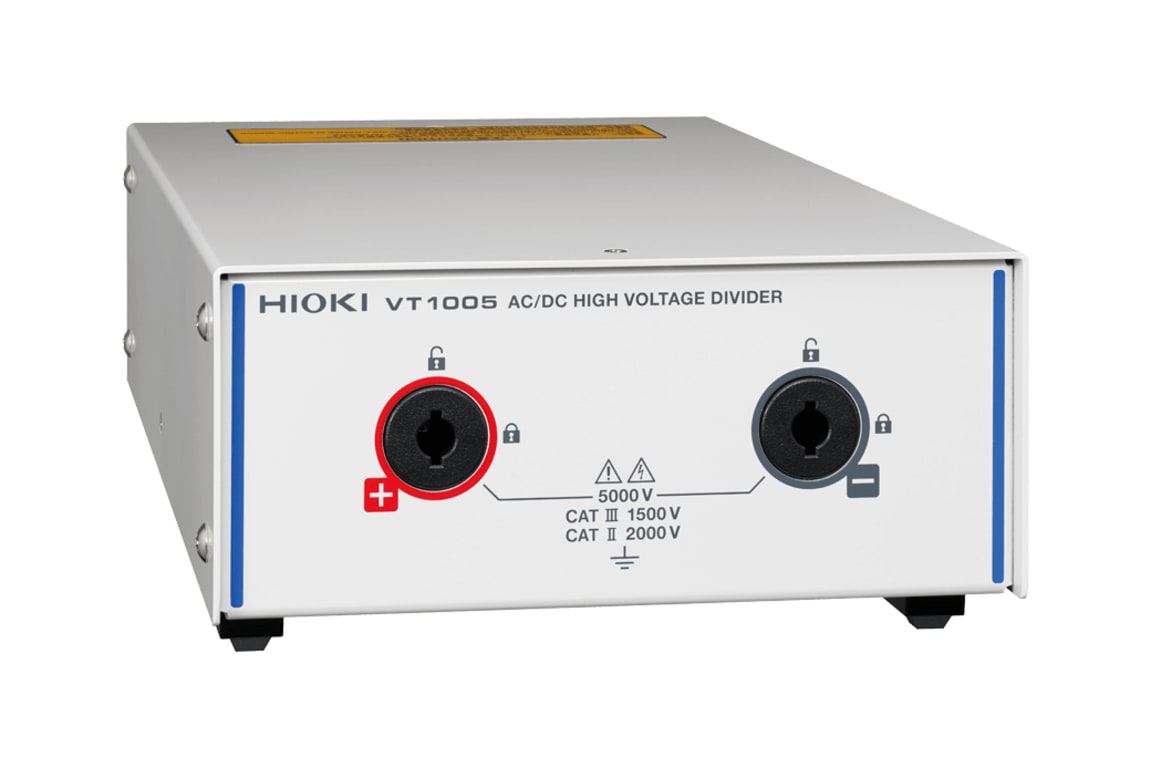
Hioki VT1005
- Use with Power Analyzers PW6001, PW3390, and PW8001 to measure for high voltage measurements from inverters used in industrial equipment.
- Safely Measure High Voltages up to 5000 V
- Detect Efficiency Improvement Effects on the Order of 0.1%
- Max. Input 5000 V, 2000 V CAT II, 1500 V CAT III
- Measurement Accuracy: ±0.08% (DC), ±0.04% (50/60 Hz), ±0.17% (50 kHz)
AC/DC High Voltage Divider (For use with PW6001, PW3390, and PW8001 Power Analyzers)
AC/DC HIGH VOLTAGE DIVIDER VT1005
Safely Measure High Voltages up to 5000 V
Detect Efficiency Improvement Effects on the Order of 0.1%
Inverters used in rail and power system applications convert high-voltage power. To measure the efficiency of such conversions, it’s necessary to measure voltages of 1000 V and above. The VT1005 divides voltages of up to 5000 V and outputs them to a power analyzer. In order to measure the efficiency of high-efficiency inverters with a high degree of precision, you need to be able to measure power from DC to high frequencies accurately. Thanks to its excellent frequency flatness, the VT1005 makes possible accurate measurements at frequencies ranging from the fundamental wave to switching-frequency components. The VT1005 must be used with a PW6001, PW3390, or PW8001 power analyzer.
Divides High Voltage by 1000:1 and Outputs
Max. Input 5000 V (*1), 2000 V CAT II, 1500 V CAT III
Generally, a power analyzer alone cannot directly measure voltages above 1000 V (AC). With the VT1005, large voltages of up to 5000 V can be accurately measured with a power analyzer.
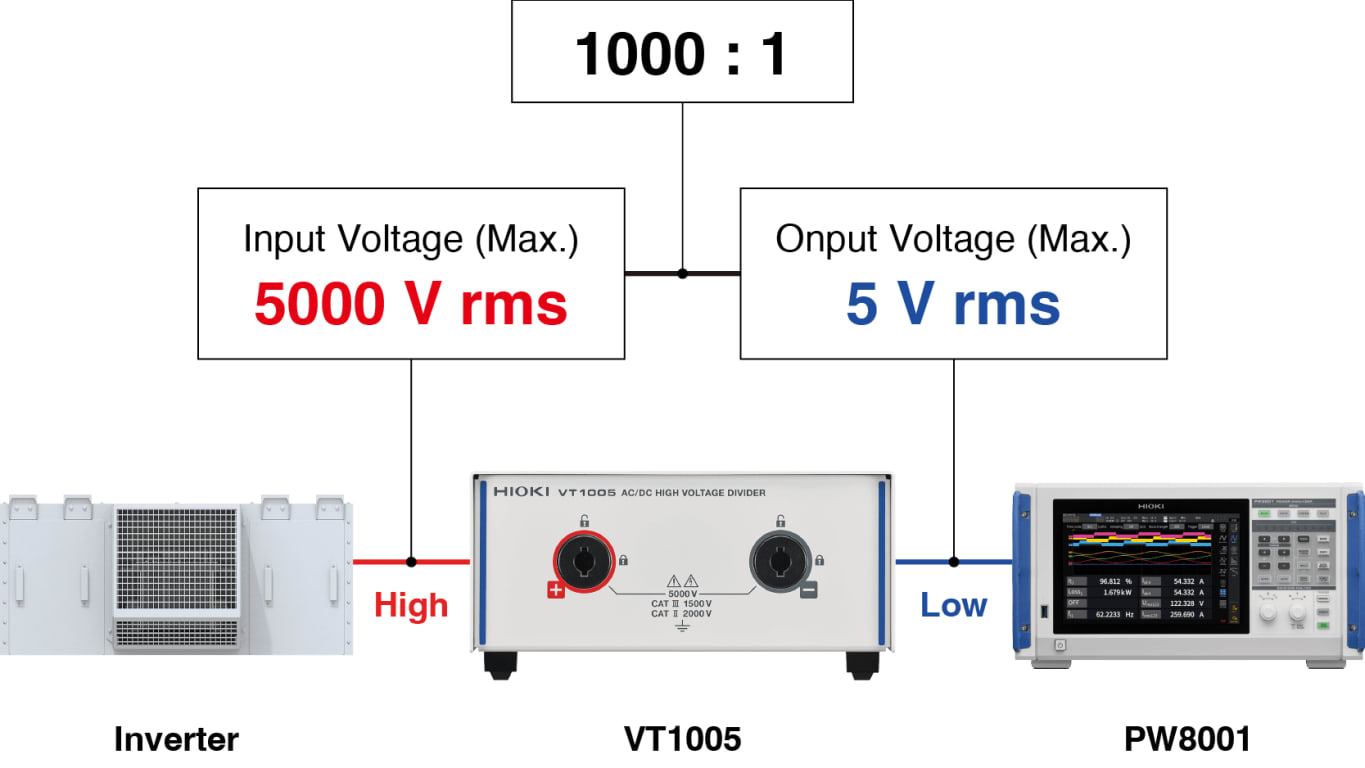
Evaluation of the Efficiency of Inverters That Use SiC Power Devices in Electrical Railways

Example of VT1005 and PW8001 connection
Accurate Power Measurement From Fundamental to Switching Frequency Components
The VT1005 can measure voltage with excellent accuracy across a broad band of frequencies. Accuracy is 0.1% or less at DC and commercial frequencies (50/60 Hz). In addition, the device can measure the most commonly used switching frequencies (10 kHz or less) and the switching frequencies of inverters that use SiC power devices (from 10 kHz to 50 kHz) with a high degree of accuracy.
Key Considerations for Accurately Measuring Efficiency
Active power on the output side of inverters includes not only the fundamental component but also switching components. In order to measure the efficiency with a high degree of precision, you must be able to accurately measure not only the fundamental component but also the switching components.
Active Power Spectrogram for an Inverter’s Output Power
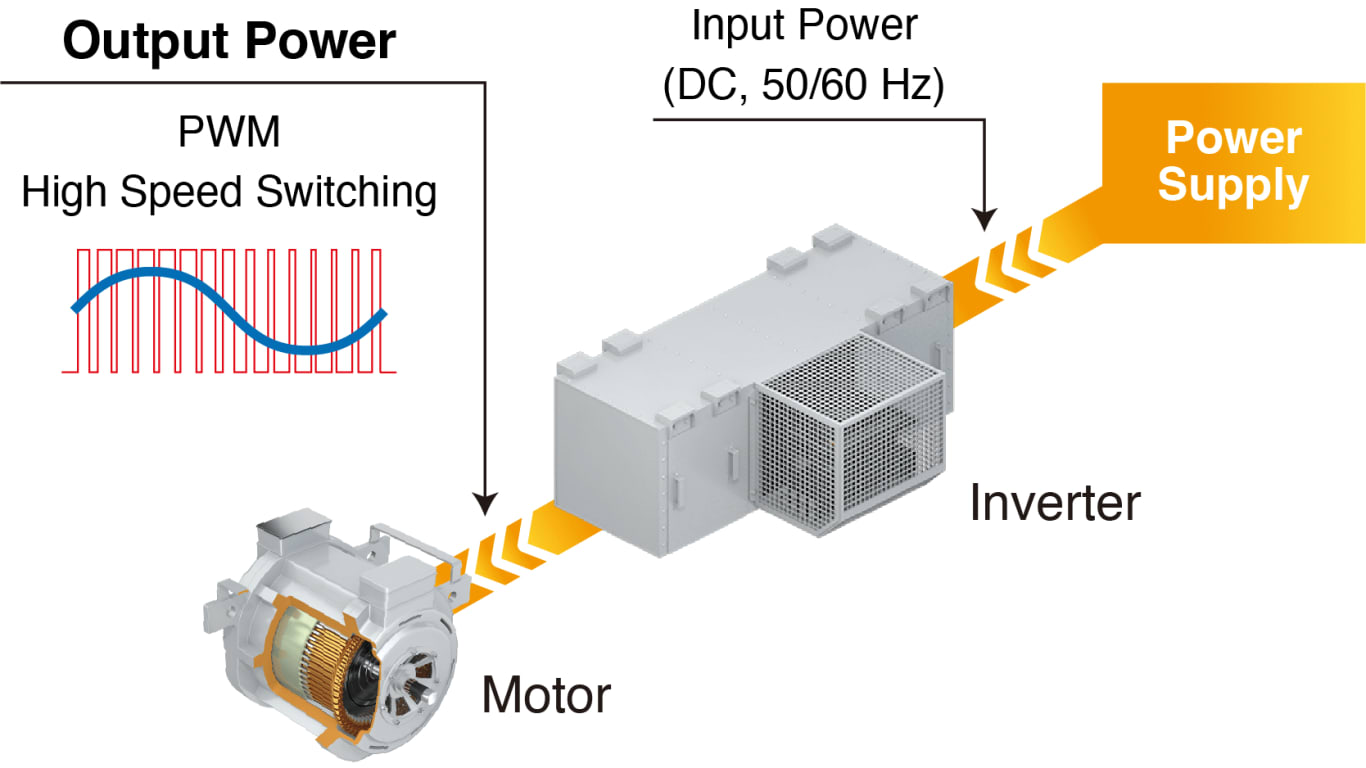
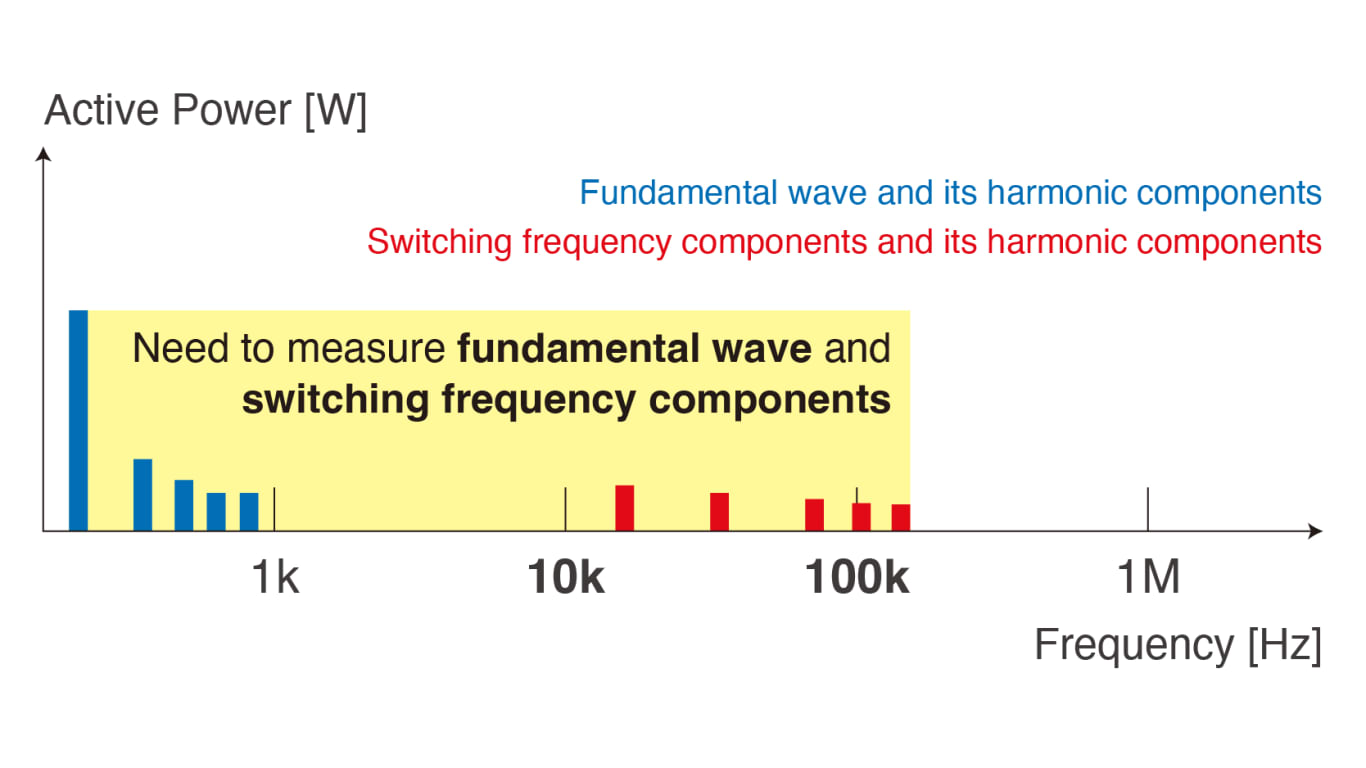
Differences Between High-Voltage Differential Probes and VT1005
High-voltage differential probes have a broad frequency band, but measurement error on the order of several percent occurs within that band. Thanks to high accuracy and excellent frequency flatness within its frequency band, the VT1005 makes it possible to detect efficiency improvement effects on the order of 0.1%, a task that has been impossible until now.
Comparison of High-Voltage Differential Probe and VT1005


Accurate and Reproducible Measurement of Inverter Efficiency with Excellent Noise Immunity
Comparing the noise resistance measurement result of an inverter’s secondary side.
The VT1005 is highly resistant to both common-mode and high-frequency noise, allowing it to measure voltage accurately even in noisy environments. Since conversion devices like inverters are sources of noise, noise resistance is important in efficiency evaluation.

Power Measurement/Power Quality Analyzer Template | |
|---|---|
| Maximum Voltage AC | 5000 V |
| Maximum Voltage DC | 5000 V |
| CAT Rating | III |
Product General Attributes | |
| Warranty | 3 YEARS |
| Safety Approval | CE |
| Product Weight | 77.6 OUNCES (4.85 LBS) |
| Product Height | 3.28 IN |
| Product Length | 13.62 IN |
| Product Width | 7.68 IN |
| Country of Origin | Japan |
Be the first to review “Hioki VT1005 – AC/DC High Voltage Divider (For use with PW6001, PW3390, PW8001 Power Analyzers)”
You must be logged in to post a review.
Manuals/Guides
Spec Sheets
| Weight | 77.6 lbs |
|---|---|
| Dimensions | 13.62 × 7.68 × 3.28 in |
Related products
Sale
AEMC 8336 W/4 193-24-BK – PowerPad® III Model 8336 w/4 193-24-BK Probes (24″ Flex) Rated to 6500A AC
Our team of knowledgeable professionals is here to help you make informed decisions. Whether you need product recommendations, technical support, or guidance on your purchase, we're just a click away.
Contact Us Now:
📧 sales@nestesinstruments.com
📞 +1 (833) 763-7837
Let us assist you in finding the perfect solution!
Contact Us Now:
📧 sales@nestesinstruments.com
📞 +1 (833) 763-7837
Let us assist you in finding the perfect solution!




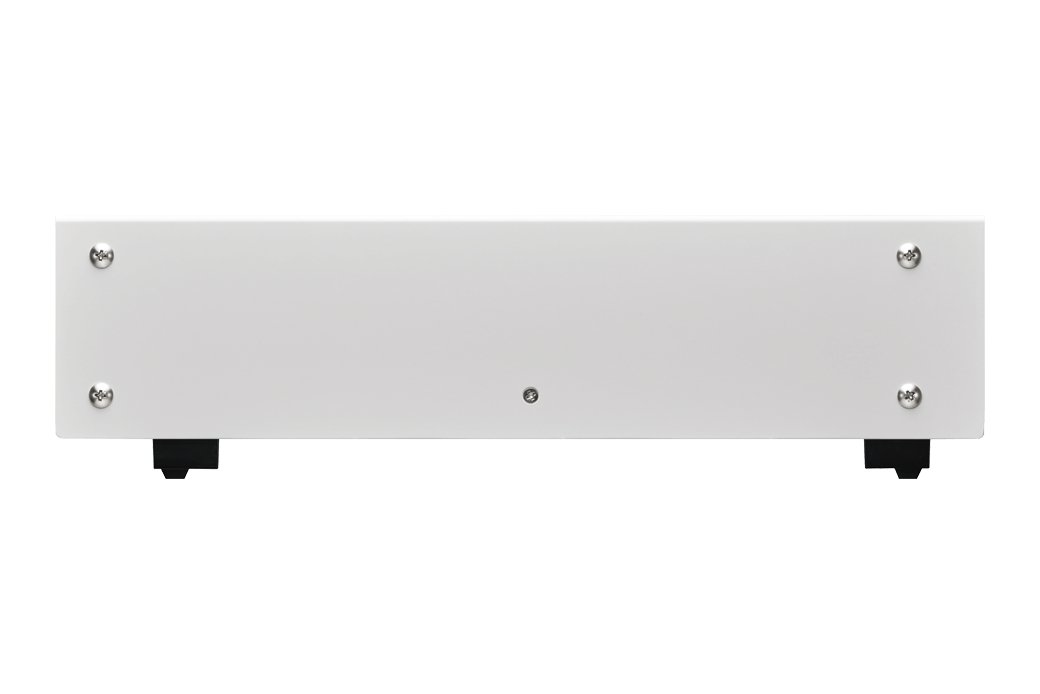

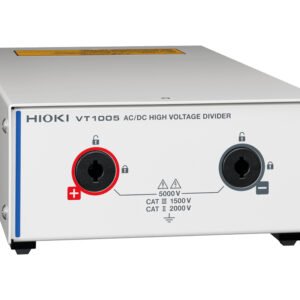
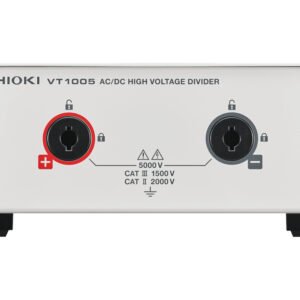
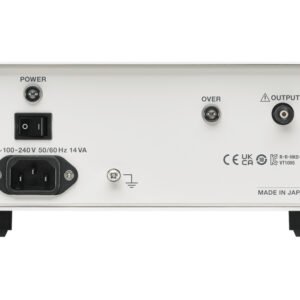
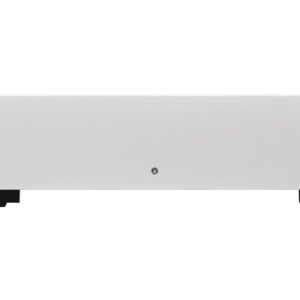




Reviews
There are no reviews yet.